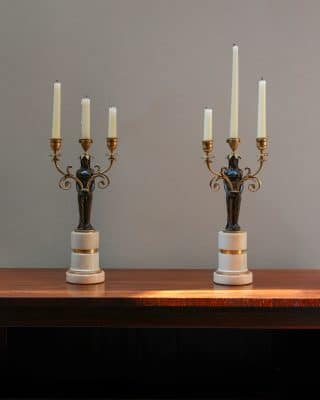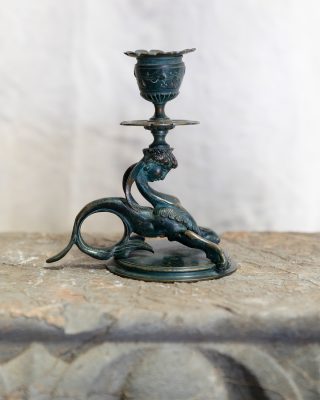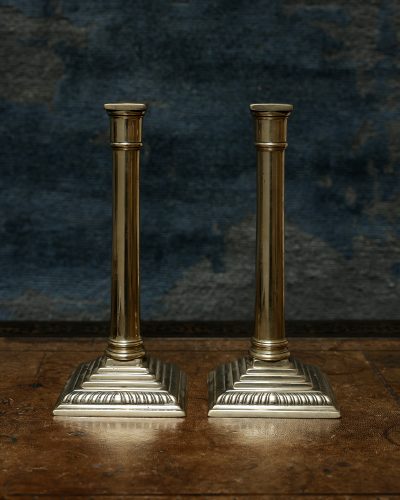
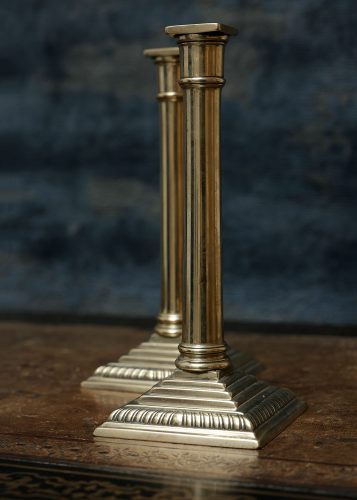
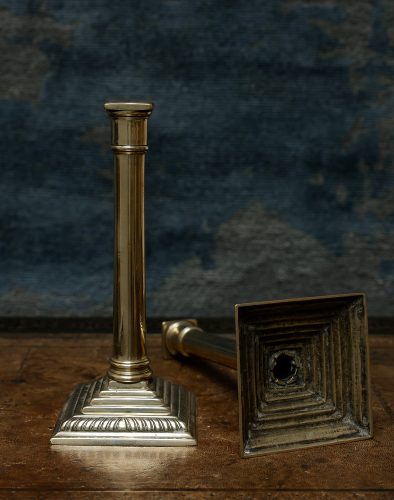
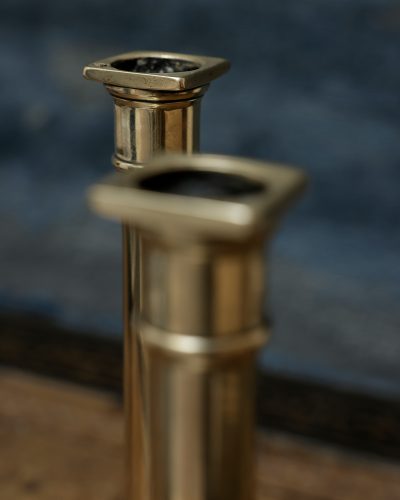
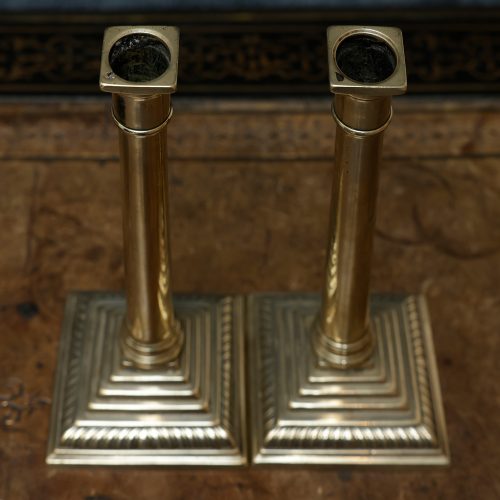
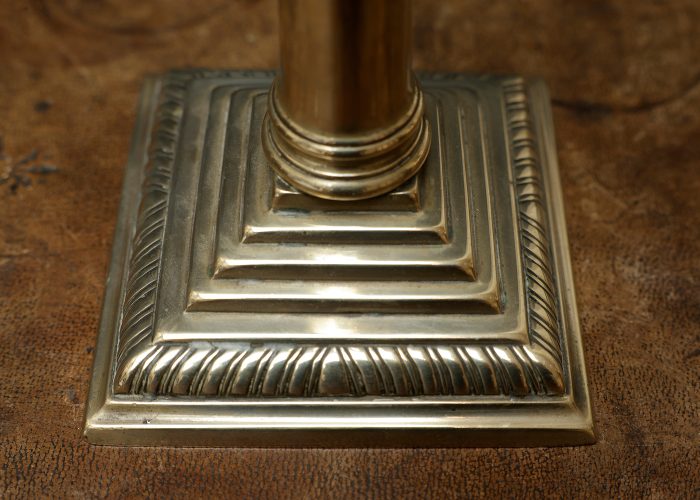
A Pair C18th Paktong Candlesticks
A very good pair of 18th Century ‘Paktong’ candlesticks with a square stepped foot and a band of gadrooning – a plain stem which is ringed at the lower end, and a square capital.
Paktong, is named according to the Cantonese pronunciation of the Chinese pai-t’ung, meaning white copper. Imported in small quantities, paktong was used by European craftsmen to make domestic objects which imitated silverware. A precious alloy which is hard and tough and not easily corroded – it’s these very qualities which have been instrumental in the preservation of these items. They are rarely found dented, bent or scratched in any way. And when freshly cleaned or buffed, so white in colour – it’s hard to distinguish from silver.
In the middle of the 18th century new styles of candlesticks were being produced by the silversmiths, in silver, and were exceedingly popular. They were rarely copied in brass by English brassfounders – they were however made of paktong and it’s believed by the silversmiths themselves, in England, in 1750–1760.
The use of paktong seems to have been very much restricted – and mainly confined to the making of candlesticks, candle-snuffers, fire-grates and the handles of fire tools. Smaller items too, such as tobacco-stoppers and drawer-handles.
It’s important to note that these candlesticks seldom, if ever, bear the makers’ marks of any kind or any mark resembling one. Another feature which classifies the alloy is the underside or inside of the candlestick base – which is always smooth, the roughness of the casting having been chiselled or scraped away.
Interestingly, the imported paktong was said to be made from a secret formula, and no success has since been achieved, even after analysis, in producing an exactly similar alloy in Europe. And it appears that after only a few years of commercial use, the secret was lost – and except in isolated instances, paktong has not been used by metal workers since 1775.
Dimensions
Base Width: 110mm / 4¼"Max Height: 260mm / 10¼"
